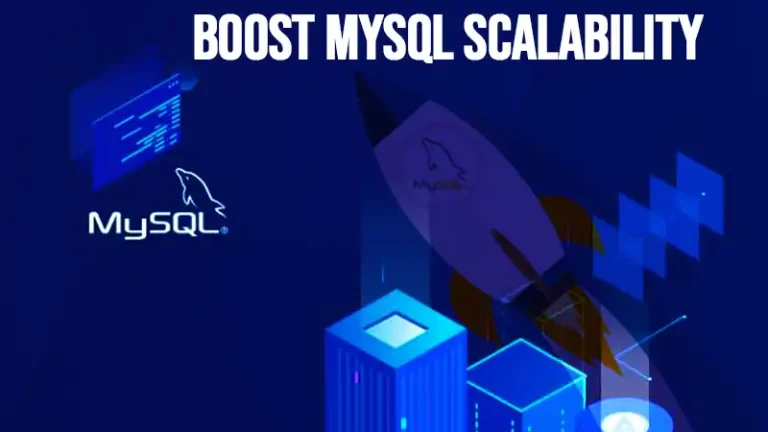Factors or Considerations for Choosing a Cloud Service Model | ULTIMATE EXPLANATION
Choosing the right cloud service model is a pivotal decision for businesses navigating the digital landscape. With the myriad of options available—ranging from Infrastructure as a Service (IaaS) to Platform as a Service (PaaS) and Software as a Service (SaaS)—selecting the most suitable model demands a comprehensive evaluation of specific factors.
In this article, we will learn the key considerations underpinning the choice of a cloud service model.

What Is the Cloud Service Model?
Cloud service models refer to how cloud computing services are delivered to users. There are three primary service models:
Image 1- Cloud Service Models
Infrastructure as a Service (IaaS)
It offers virtualized computing resources over the Internet. Users can rent virtual machines, storage, and networking infrastructure. They have control over the operating system, and applications, and possibly limited control over networking components.
Platform as a Service (PaaS)
This model provides a platform allowing customers to develop, run, and manage applications without dealing with the underlying infrastructure. It typically includes tools for application development, testing, and deployment.
Software as a Service (SaaS)
SaaS delivers software applications over the internet on a subscription basis. Users can access these applications through a web browser without needing to install or maintain the software on their devices.
These models vary in the level of control and management users have over the underlying infrastructure and applications, allowing for different levels of customization and responsibility for the users.
How to Choose a Cloud Service Provider?
Here’s a detailed breakdown of factors to consider when choosing a cloud service provider:
Workload Requirements
Understanding the nature of your workload is fundamental. Different cloud service models – Infrastructure as a Service (IaaS), Platform as a Service (PaaS), and Software as a Service (SaaS) – cater to varying degrees of control and management.
Determine whether your workload demands more control over the underlying infrastructure or if leveraging pre-built applications aligns better with your objectives.
Scalability and Flexibility
Consider the scalability needs of your business. IaaS offers more scalability, allowing for the expansion or reduction of resources as required. PaaS offers a middle ground, offering scalability within the platform’s constraints, while SaaS provides the least control but maximum scalability as the provider manages the entire application.
Security and Compliance
Assess the level of security and compliance measures needed for your data and applications. IaaS grants more control over security configurations, while SaaS relies heavily on the provider’s security protocols. Evaluate if the service model aligns with your industry’s compliance regulations and data protection requirements.
Cost and Resource Management
Analyze the cost implications associated with each service model. IaaS often provides a pay-as-you-go model, allowing for cost efficiency and resource optimization.
PaaS might have a more structured pricing model, and SaaS typically involves a subscription-based cost structure. Consider how these align with your budget and resource management strategy.
Technical Expertise
Assess your team’s technical expertise. IaaS requires a higher level of technical know-how for infrastructure management, whereas PaaS and SaaS relieve much of the infrastructure burden, requiring proficiency in application development and customization instead.
Vendor Reliability and Support
Evaluate the reliability and support provided by the cloud service vendor. Consider factors such as uptime, service-level agreements (SLAs), customer support, and the vendor’s reputation within the industry.
Integration and Interoperability
Consider how well the chosen service model integrates with your existing systems and applications. PaaS and SaaS offerings might provide more seamless integration, while IaaS allows for greater customization but requires more effort in integration.
Geographical Considerations
For some businesses, data sovereignty and the geographical location of servers might be critical due to compliance or latency concerns. Understand where the cloud provider’s data centers are and if they align with your geographic requirements.
Frequently Asked Questions
Are there risks associated with choosing the wrong cloud service model?
Yes, choosing an unsuitable service model may result in inefficient resource allocation, increased costs, limitations in customization or control, and challenges in integration with existing systems, potentially affecting business operations and scalability.
Can I migrate between cloud service models if needed?
Depending on your provider and the complexity of your setup, migration between service models can be feasible. However, it might require substantial effort and potential downtime, emphasizing the importance of choosing the right model from the outset.
Can a hybrid approach be beneficial in choosing a cloud service model?
Absolutely. A hybrid approach, combining elements from different cloud service models (public, private, or hybrid cloud), allows leveraging the strengths of each model while addressing specific business needs, security concerns, or compliance requirements.
Conclusion
Selecting the right cloud service model demands a comprehensive assessment of these key factors. It’s crucial to balance control, scalability, security, and cost-effectiveness. By carefully evaluating these considerations, businesses can make informed decisions that align with their strategic objectives and drive optimal outcomes in the cloud computing landscape.







